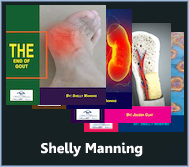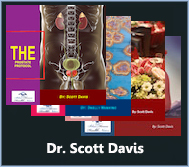What is the main cause of TMJ?
Temporomandibular joint disorder (TMJ) is a condition that affects the temporomandibular joint, which connects the jawbone to the skull. The exact cause of TMJ disorder is often multifactorial and may involve a combination of factors. Some common factors that contribute to TMJ disorder include:
- Jaw Trauma or Injury: Trauma to the jaw, such as a direct blow or impact to the face, can damage the temporomandibular joint and surrounding structures, leading to TMJ disorder. Motor vehicle accidents, sports injuries, and physical altercations are examples of events that can cause jaw trauma.
- Bruxism (Teeth Grinding or Clenching): Chronic teeth grinding or clenching, known as bruxism, can put excessive pressure on the temporomandibular joint and surrounding muscles, leading to TMJ disorder. Bruxism may occur during sleep or during periods of stress and anxiety.
- Malocclusion (Misalignment of Teeth): Misalignment of the teeth or bite (malocclusion) can disrupt the normal function of the temporomandibular joint, leading to TMJ disorder. Uneven tooth surfaces or discrepancies in jaw alignment can place strain on the joint during chewing and speaking.
- Arthritis: Various forms of arthritis, including rheumatoid arthritis and osteoarthritis, can affect the temporomandibular joint and cause inflammation, pain, and dysfunction. Arthritic changes in the joint can lead to degradation of the cartilage, resulting in TMJ disorder.
- Stress and Muscle Tension: Stress, anxiety, and muscle tension can contribute to TMJ disorder by causing individuals to clench their jaw or tighten their facial muscles involuntarily. Prolonged muscle tension in the jaw and surrounding areas can lead to pain, stiffness, and dysfunction of the temporomandibular joint.
- Genetic Factors: Some individuals may have an increased susceptibility to TMJ disorder due to genetic factors, such as variations in jaw structure or joint anatomy. Family history of TMJ disorder may also play a role in predisposing individuals to the condition.
- Poor Posture: Poor posture, particularly of the head and neck, can affect the alignment and function of the temporomandibular joint. Forward head posture, slouching, and other postural abnormalities can contribute to muscle imbalances and strain on the jaw joint.
- Dental Procedures: Certain dental procedures, such as prolonged dental work or orthodontic treatment, may inadvertently contribute to TMJ disorder by placing stress on the temporomandibular joint or altering the bite relationship.
It’s important to note that TMJ disorder is often a complex and multifactorial condition, and the underlying cause may vary among individuals. A comprehensive evaluation by a healthcare provider, typically a dentist or oral surgeon, is necessary to determine the specific factors contributing to TMJ disorder and develop an appropriate treatment plan. Treatment options for TMJ disorder may include lifestyle modifications, conservative therapies (such as oral appliances, physical therapy, and stress management techniques), medications, and in some cases, surgical intervention.
What is the temporomandibular joint or TMJ?
The temporomandibular joint (TMJ) is a bilateral joint that connects the jawbone (mandible) to the skull, specifically to the temporal bones of the skull. These joints are located just in front of the ears on both sides of the head. The TMJs are essential for various functions, including chewing, speaking, and swallowing.
The TMJ is a complex joint with several components that allow for smooth and coordinated movement of the jaw. These components include:
- Articular Surfaces: The TMJ consists of two main articular surfaces: the mandibular condyles (rounded projections at the ends of the lower jawbone) and the temporal bone (part of the skull). These surfaces are covered with a thin layer of cartilage to facilitate smooth movement.
- Articular Disc: Between the mandibular condyle and the temporal bone lies a fibrous disc called the articular disc or meniscus. This disc acts as a cushion and helps distribute forces evenly across the joint during movement.
- Ligaments: Ligaments surround the TMJ and provide stability to the joint. The primary ligaments include the temporomandibular ligament, stylomandibular ligament, and sphenomandibular ligament.
- Muscles: Several muscles are involved in the movement of the TMJ, including the muscles of mastication (chewing), such as the temporalis, masseter, and medial and lateral pterygoid muscles.
- Synovial Cavity: Like other synovial joints in the body, the TMJ contains a synovial cavity filled with synovial fluid. This fluid lubricates the joint and helps reduce friction during movement.
The TMJ allows for various movements, including hinge-like opening and closing of the jaw (e.g., during chewing and speaking), as well as gliding and rotational movements for tasks such as chewing tough foods or yawning.
Disorders or dysfunction of the temporomandibular joint, commonly referred to as TMJ disorders or TMD, can lead to symptoms such as jaw pain, clicking or popping sounds during jaw movement, difficulty opening or closing the mouth, jaw stiffness, and headaches. TMJ disorders may result from various factors, including jaw trauma, bruxism (teeth grinding), malocclusion (misalignment of the teeth), arthritis, stress, and muscle tension. Treatment for TMJ disorders may involve conservative measures such as lifestyle modifications, oral appliances, physical therapy, and medications, and in some cases, surgical intervention.
What is temporomandibular joint problems?
Temporomandibular joint (TMJ) problems, also known as temporomandibular joint disorders (TMD), encompass a range of conditions that affect the function and/or structure of the TMJ and surrounding structures. TMJ problems can manifest with various symptoms and may result from a combination of factors. Some common temporomandibular joint problems include:
- Pain: Pain in the jaw joint or surrounding areas is a hallmark symptom of TMJ problems. This pain may be localized to the TMJ itself, the jaw muscles, or the surrounding tissues. It can be sharp, dull, or throbbing in nature and may worsen with jaw movement, chewing, or clenching.
- Clicking or Popping Sounds: Many individuals with TMJ problems experience clicking, popping, or grating sounds when they open or close their mouths. These sounds often result from displacement or dysfunction of the articular disc within the TMJ during jaw movement.
- Limited Jaw Movement: TMJ problems can cause limitations in jaw movement, making it difficult to open the mouth fully or move the jaw from side to side. This limited range of motion may be accompanied by a sensation of stiffness or tightness in the jaw.
- Muscle Tension and Fatigue: TMJ disorders can lead to muscle tension, stiffness, and fatigue in the muscles of mastication (chewing muscles), as well as the muscles of the face, neck, and shoulders. This muscle tension can cause discomfort, headaches, and difficulty with chewing or speaking.
- Locking of the Jaw: In some cases, TMJ problems can result in the temporary locking of the jaw in an open or closed position. This locking may occur spontaneously or following jaw movements and can be accompanied by pain and difficulty in returning the jaw to its normal position.
- Facial Pain and Headaches: TMJ disorders can cause referred pain to other areas of the face, head, and neck. Facial pain, headaches (including tension headaches and migraines), earaches, and neck pain are common symptoms associated with TMJ problems.
- Swelling and Inflammation: Inflammation of the TMJ and surrounding tissues may occur in response to injury, trauma, or chronic dysfunction. Swelling, tenderness, and warmth in the jaw joint area may be present in some individuals with TMJ problems.
- Malocclusion: TMJ disorders can sometimes lead to changes in the alignment of the teeth and bite (malocclusion). This misalignment may result from uneven wear on the teeth, altered jaw position, or muscle imbalances associated with TMJ dysfunction.
- Bruxism: Individuals with TMJ problems may experience bruxism, or teeth grinding and clenching, particularly during sleep. Bruxism can exacerbate TMJ symptoms and contribute to further damage to the TMJ and teeth.
TMJ problems can have a significant impact on a person’s quality of life, leading to pain, discomfort, and functional limitations. Treatment for TMJ disorders may involve a combination of conservative measures, such as lifestyle modifications, oral appliances, physical therapy, and medications, to alleviate symptoms and improve jaw function. In some cases, more invasive interventions, such as corticosteroid injections, arthrocentesis, or surgery, may be recommended for refractory or severe TMJ problems. It’s essential for individuals experiencing TMJ symptoms to seek evaluation and treatment from a healthcare provider, typically a dentist or oral surgeon, who specializes in TMJ disorders to receive appropriate care tailored to their specific needs.
How will you know if you have TMJ?
If you suspect you may have temporomandibular joint (TMJ) dysfunction or disorder, it’s essential to consult with a healthcare provider, typically a dentist or oral surgeon, who specializes in TMJ disorders for a thorough evaluation and diagnosis. However, there are several signs and symptoms that may indicate the presence of TMJ problems. These include:
- Jaw Pain: Pain in the jaw joint (located just in front of the ears) is a common symptom of TMJ disorders. This pain may be localized to the TMJ itself or may radiate to the surrounding areas, including the jaw muscles, face, temples, and neck.
- Clicking, Popping, or Grinding Sounds: Many individuals with TMJ disorders experience clicking, popping, or grinding sounds when they open or close their mouths. These sounds may occur due to displacement or dysfunction of the articular disc within the TMJ during jaw movement.
- Limited Jaw Movement: TMJ problems can cause limitations in jaw movement, making it difficult to open the mouth fully, close it completely, or move the jaw from side to side. This limited range of motion may be accompanied by a sensation of stiffness or tightness in the jaw.
- Muscle Tension and Fatigue: TMJ disorders can lead to muscle tension, stiffness, and fatigue in the muscles of mastication (chewing muscles), as well as the muscles of the face, neck, and shoulders. This muscle tension can cause discomfort, headaches, and difficulty with chewing or speaking.
- Facial Pain and Headaches: TMJ disorders may cause referred pain to other areas of the face, head, and neck. Facial pain, headaches (including tension headaches and migraines), earaches, and neck pain are common symptoms associated with TMJ problems.
- Jaw Locking: In some cases, TMJ problems can result in the temporary locking of the jaw in an open or closed position. This locking may occur spontaneously or following jaw movements and can be accompanied by pain and difficulty in returning the jaw to its normal position.
- Swelling and Inflammation: Inflammation of the TMJ and surrounding tissues may occur in response to injury, trauma, or chronic dysfunction. Swelling, tenderness, and warmth in the jaw joint area may be present in some individuals with TMJ problems.
- Changes in Bite Alignment: TMJ disorders can sometimes lead to changes in the alignment of the teeth and bite (malocclusion). This misalignment may result from uneven wear on the teeth, altered jaw position, or muscle imbalances associated with TMJ dysfunction.
If you are experiencing any of these signs or symptoms suggestive of TMJ problems, it’s essential to seek evaluation and diagnosis from a healthcare provider who specializes in TMJ disorders. A comprehensive evaluation, including a medical history, physical examination, and possibly imaging studies (such as X-rays or MRI), can help determine the underlying cause of your symptoms and guide appropriate treatment. Treatment for TMJ disorders may involve a combination of conservative measures, such as lifestyle modifications, oral appliances, physical therapy, and medications, to alleviate symptoms and improve jaw function. In some cases, more invasive interventions, such as corticosteroid injections, arthrocentesis, or surgery, may be recommended for refractory or severe TMJ problems.
Click to see more detail on Video

Christian’s program is guaranteed. I signed up for Christian’s program because I realized that… after hundreds of dollars spent on tests, x-rays, fittings, and meds… and then thousands of dollars spent on implants… that for me there was no light at the end of the tunnel. TMJ was a deteriorating condition, getting steadily worse, dragging my life into a place that I just didn’t want to be. I didn’t want to let my life slip into more misery than I was already suffering. What I was really scared of was damage that was nearly impossible to cure.
Click to see more detail on Video





